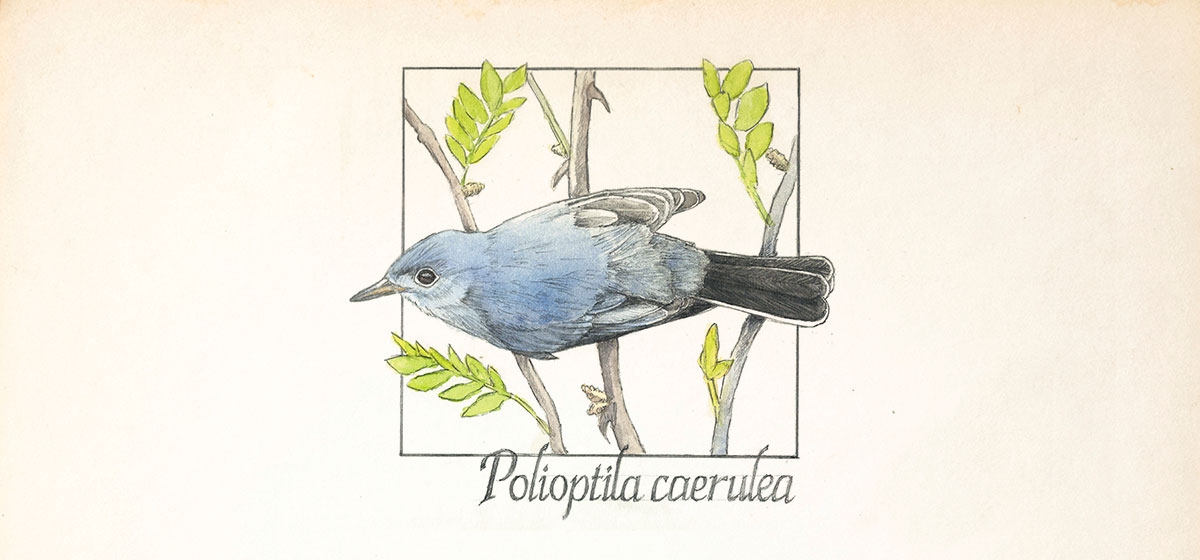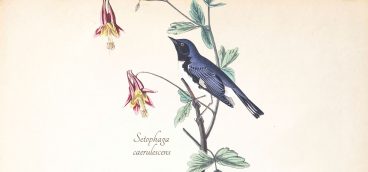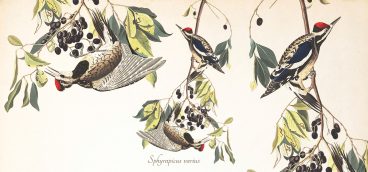
One spring, I ventured south to Savannah, Georgia, for some sun and warmth. As a coastal locale and part of the Atlantic flyway, it was rich with avifauna heading back to nesting territories farther north in places like western Pennsylvania. It was March, and the streets of that wonderful city were alive with flowering trees, strolling tourists, and birds of all kinds. And it was there, in Oglethorpe Square, that I was treated to eye-level observations of the blue-gray gnatcatcher.
The gnatcatcher, smaller than a chickadee, is an energetic woodland bird that gleans insects on and around trees and shrubs, sometimes in mid-air. Gnats, it turns out, don’t make up much of its diet. A long, flashy tail with white feathers at either edge, a white eye ring, and dark bill are the defining field marks of this fast-moving species. The bird’s eponymous coloration is subtle, and while males and females generally sport the same plumage, in spring and summer, males also develop a dashing pair of black eyebrows that signal their virility. I’m reminded of an exceptionally hyper but wee Groucho Marx sans glasses and cigar.
Back in Pittsburgh a few weeks later, I was out birding near a tributary of Squaw Run in Fox Chapel where I was greeted by a pair of gnatcatchers once again. The same birds? Highly doubtful, but blue-gray gnatcatchers do fan out from Central America and Mexico each spring to speed north to Pittsburgh and beyond, so it’s possible. The only member of its genus in eastern North America, but generally found in breeding season coast to coast, this lovely bird descends on our area from April to August each year. Their nests are cups of grass and weedy material often wrapped in spider webs and camouflaged with lichen. Amazingly, blue-gray gnatcatchers tend successive clutches of eggs in typically two but up to seven nesting attempts each breeding season. Frequent nesting attempts help the species foil predators and nest parasites that would otherwise limit its numbers. Warmer weather has allowed a steady push northward of the gnatcatcher’s breeding range, an extension of about 200 miles over the last century. As a result, their numbers are stable overall, perhaps even increasing.
Like many lesser-known avian species in our area, gnatcatchers aren’t likely to show up at the feeder or window, so my chance encounter in Georgia wasn’t typical. It takes a little effort to run into this bird, but the time is certainly worth it. As migration gets underway this spring, birds show up in surprising places; so walking a streamside in an office park or taking a jaunt through Frick Park, or North Park, or Hartwood Acres can yield gems like the gnatcatcher. Given our geography and natural resources, humans aren’t the only species that finds Pittsburgh “most livable.” Keep your eyes and ears open and your binoculars at the ready!
Join the Three Rivers Birding Club or the Audubon Society of Western Pennsylvania on a bird walk this spring. All skill levels are welcome, and the more birders looking, the more birds can be seen.





